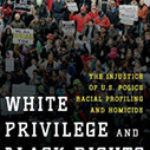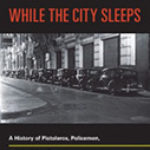Violence All Around

Author: John Sifton
Publisher: Cambridge, MA: Harvard University Press, 2015. 336p.
Reviewer: Jared Del Rosso | January 2016
The attempt on John Sifton’s life happened behind his back. As he sat in a car in Afghanistan, his body twisted away from the street so he could speak to colleagues in the back, Sifton did not see two men on a motorcycle approach and stop alongside his window. And he did not see when one of the two men aimed a handgun at his head. His colleagues did, and Sifton mistook the panic in their faces for offense at something he said. He was saved, only, by his would-be assassins’ incompetence. The driver of the motorcycle accidentally engaged the clutch, throwing both men off balance.
Sifton tells this story early in Violence All Around to make a point about violence and distance. "This is a very intimate way to kill someone," he explains (p. 54). Most contemporary violence, on the other hand, "tends to be done at an impersonal distance" (p. 54). We think of the "shock and awe" that reintroduced Iraqis to American force and, more recently, the drone strikes that have killed thousands of Pakistanis. Human physiology, Sifton concludes, is not designed for interpersonal violence.
Sifton’s account of his own near murder stuck with me as I read Violence All Around. It stands, in my reading, not as an allegory about violence and distance, but for the place of violence in the book and, for most of the book’s potential readers, contemporary life. Violence may be all around us, but it goes on behind our backs, at the periphery of our fields of vision and, for that matter, attention. We usually encounter it only second-hand—as media spectacle cleansed of politics or in political discourse cleansed of brutality.
Violence All Around means to do something different. Sifton explains, in the book’s preface, that Violence All Around looks directly at violence, rather than at its causes and effects. Violence, he concludes, "reveals deeper truths about the workings of human history and the physical world, and about cause and effect itself"(p. XII). What this means is obscure, but with this as the book’s ambition, I was surprised to encounter violence, in subsequent chapters, askew.
The book’s first chapter recounts Sifton’s work for Human Rights Watch, investigating the aftermath of U.S. airstrikes in Afghanistan in late 2001. "Not much to look at," Sifton remembers saying to his colleagues (p. 7). To us, he says: "This was the devastation of war, but it was hardly iconographic. There was nothing left to be iconic" (p. 7). Even so, he took photographs. "We needed pictures. Images to represent this … scene" (p. 7). Later chapters offer histories of the component parts of violence. Fortifications and airstrikes, for instance, figure prominently in chapters two and four respectively. A chapter on torture says little about the practice or how this deeply interpersonal form of violence persists today, given Sifton’s earlier claims about the human preference for remote violence. Instead, it focuses on Sifton’s frustrated efforts to prove the existence of CIA black sites in Morocco, Mauritania, and Poland. Even here, where we expect to encounter one of the most intimate forms of human violence, we instead find only whispers of its presence: nearly everyone Sifton speaks to denies the existence of the sites.
I do not mean this as a negative critique of Violence All Around. Though the book does not offer its reader a long, direct look at violence, it is in fact a provocation. It dwells on the capacity of some humans to plan, wield, and subsequently obscure violence. And it follows still others—Sifton and his colleagues—as they work to investigate, expose, and shame perpetrators of human rights crimes. It is a book then, about the contemporary encounter with violence, not violence itself — and about the meaning of these encounters.
Sifton for his part, is deeply pessimistic about such encounters. Of drones, he concludes that the technology foretells a future in which "brutality may become entirely detached from humanity" (p. 109). He worries over the precedent that the Bush administration set by violating the international prohibition on torture while arguing that those very violations were nothing of the sort and that "enhanced interrogation" techniques were legal. In the penultimate chapter, Sifton seems to despair of his life’s work, writing that, "all that rights advocates can do … is assemble facts and narratives that embarrass or strike at the heartstrings of the main players in history’s events, the ones who might be in a position to offer some assistance, mercy, or succor to victims of the chaos" (p. 269). Rights workers oppose the modern state’s force with mere shame and sentimentality, and this book makes it clear which side Sifton believes is winning.
In fact, Sifton goes further, scrutinizing in the book’s most compelling chapters, the ways that violence undergirds even non-violent movements and law. In "The Violence of Non-violence," he argues that non-violence, the non-violence of Gandhi and King, has been misremembered as passive tolerance of injustice and evil. He believes that genuine non-violence is, instead, a redirection of violence—political jujitsu he calls it. In this way, non-violence is not an absolute rejection of violence, but a siphoning of its effects so they may be put to oppositional ends. Sifton makes a similar point about law in “Terror as Justice.” It is not an alternative to the arbitrary rule of coercion and force. It is, instead, the sovereign state’s mastery of them — an institution that rarely needs to use direct, overt violence; the latent threat of force—"the sheriff knocking at the door to enforce a judgment, foreclose a house, reclaim stolen chattel"—is sufficient to compel most citizens to surrender to the lesser force of law (p. 262).
Stephen Pinker (2011), a more optimistic student of violence, would interpret what Sifton documents very differently. That we feel outrage at the civilian casualties of drone strikes suggests the global reach of human empathy. That torture is practiced in secret and dressed up in the rhetoric of denial is certainly an improvement on the public, celebrated, and brutal tortures of the past. That shame is enough to moderate the violence of governments; that a sophisticated, albeit impure, politics of non-violence exists; and, that law tames violence even if it needs it — are all achievements of the legal-rational state, humanitarian social movements, and a civilized citizenry. And all of this is preferable to the unrestrained, ferocious cruelty that litters human history.
Sifton doesn’t counter Pinker’s influential analysis directly. Instead, he reveals how violence still lurks in contemporary institutions, lending them some of its own durability. And by telling us what it’s like to chase violence only to find rubble and denials, he shows us just how difficult it is to directly encounter the phenomena from this side of the transaction.
This difficulty, in the end, is the point. We no longer celebrate our own cruelty. Indeed, we can hardly tolerate it. So we find increasingly remote ways to practice it, often in secret, and when accused of having done so, we deny it. All of this, Violence All Around is telling us, in service of our humanity.
Jared Del Rosso, Assistant Professor
Department of Sociology & Criminology, University of Denver
Pinker, S. (2011). The Better Angels of Our Nature: Why Violence has Declined. New York: Penguin Books.


